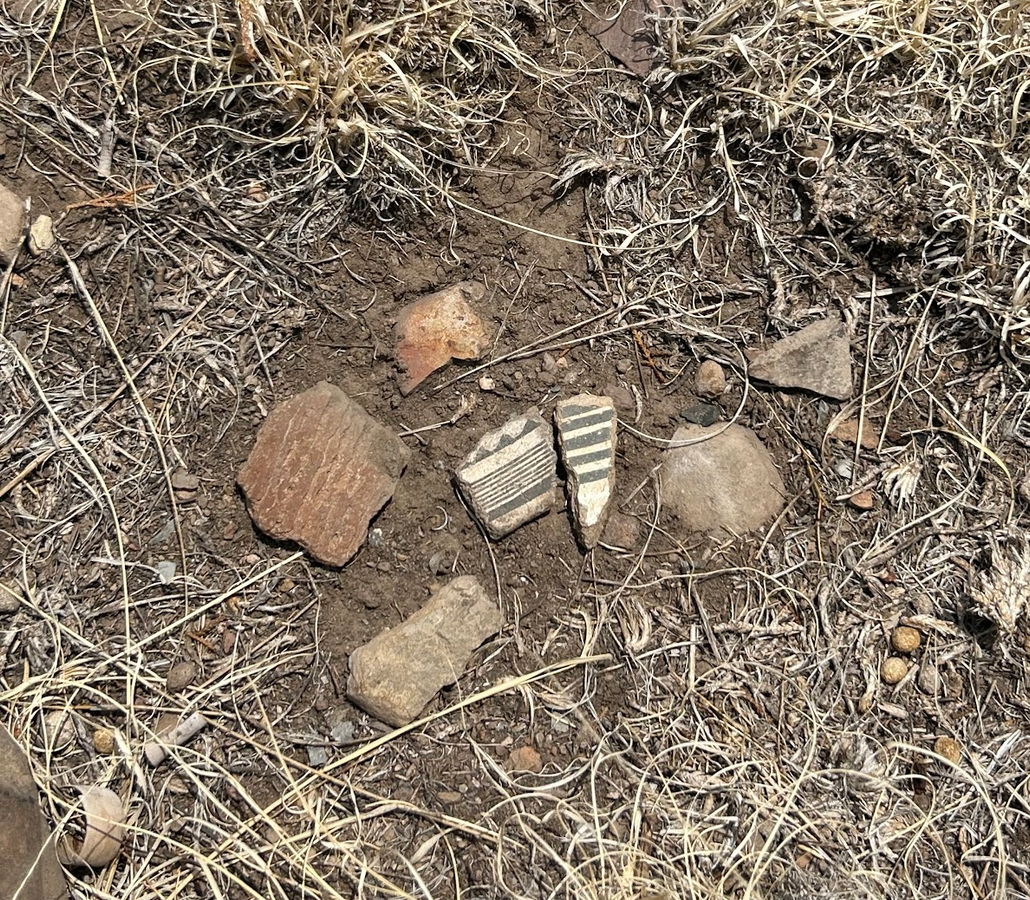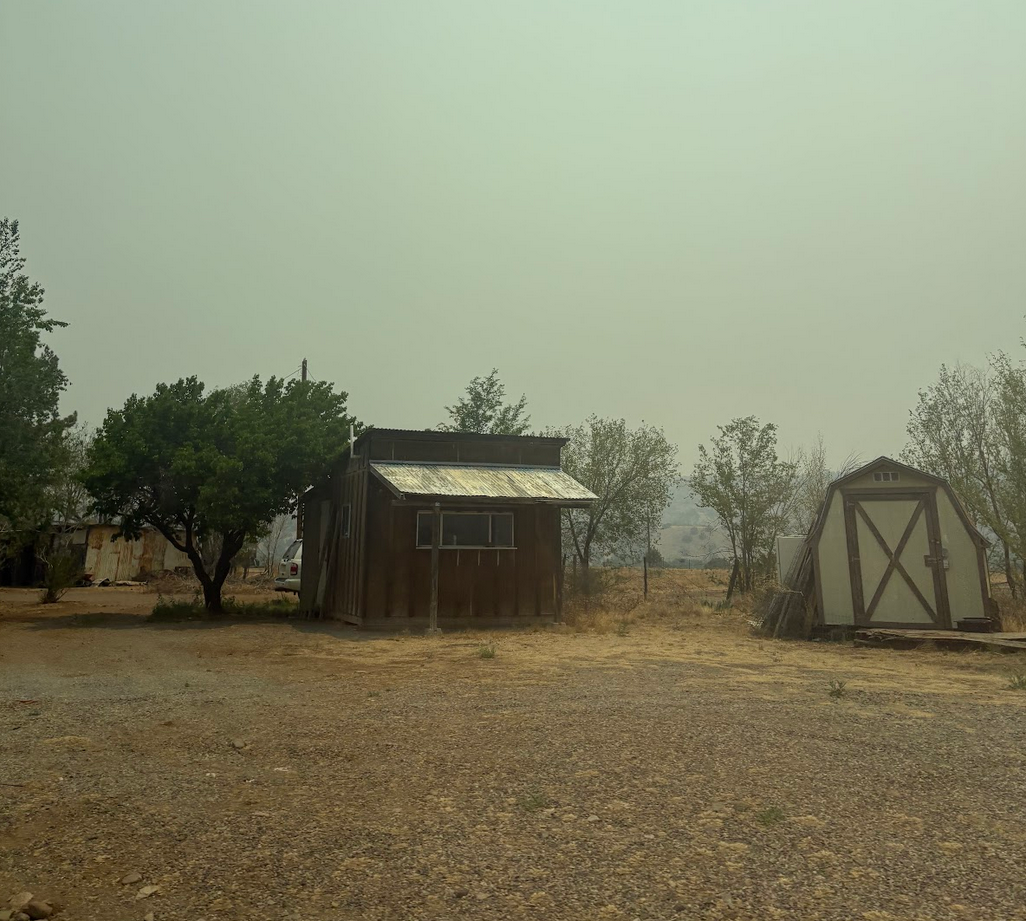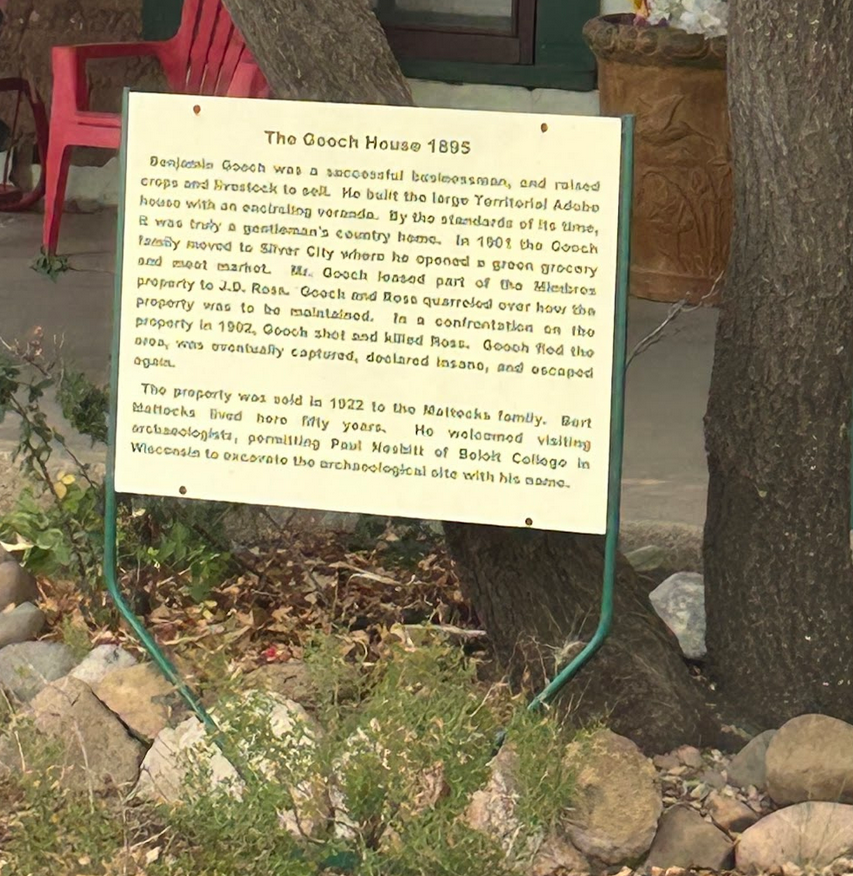- Home
- >
- Preservation Archaeology Blog
- >
- From the Field School: Community through Oral Hist...
(July 10, 2025)—Soon after arriving in Silver City, our group travelled to the Mimbres Culture Heritage Site to visit the museum and walk along the trail around the Mattocks archaeological site, which was dotted with Mimbres pottery. The abundance of sherds was beautiful and enticing, and the replicas of Mimbres vessels and sites inside the museum gave insights into the archaeological culture we were about to study. However, the thing that stuck with me the most happened after the main event: the retelling of the Ben Gooch story by one of the museum volunteers.

As we were all ready to shuffle out, hunger forming a pit in our stomachs from being in the heat, we heard the words: “Do you want to hear the Gooch story?” With a sentence like that, we were instantly enthralled. We settled around our storyteller, long-awaited sandwiches in hand, and listened.
Ben Gooch was a wealthy businessman who raised cattle and crops on the Mattocks Site. He owned a grocery store and led a successful life until 1902. In a fateful confrontation with a man named Ross, who was leasing part of the Mimbres property, Gooch fired five shots and killed him. He was then arrested and declared insane, and later escaped from jail.

Numerous details came through the retelling, including that Gooch fled to a cave after escaping prison for a second time and stole goods from area residents. We sat around our storyteller for what felt like minutes but was really an hour, listening to this tale. Although we all knew many aspects of the story were probably exaggerated, the story brought us together as a community. Our storyteller mentioned many times that he had no photographs or written evidence, but we took every word as truth. Maybe some details had changed over the years, but the impact was stronger than most things I’ve read.
Now, Gooch is brought up nearly every day by our group. He has become a part of our own mythology, as we were all brought together by this oral retelling. The story is folklore to us, as we continue to share and build on the cryptid-like nature of a cave-dwelling prison escapee.

The museum volunteer knew the story like the back of his hand and thus spread his knowledge to us. I have already told my friends back home this story, and many of my peers here have, as well. Oral history can sometimes be perceived as less authoritative or “real” compared to written history or photographic evidence, but the story of Ben Gooch was profoundly real to us.
The story reminds us that even if it is not tangible, oral history is important. It brings communities together and allows us to share not only our stories, but also our culture. Often, oral history has been passed over in favor of archaeological or written evidence, but it is just as important for learning more about other cultures, especially those without written language.